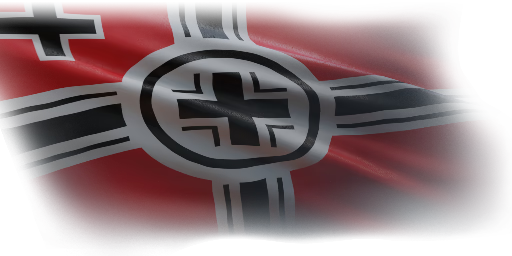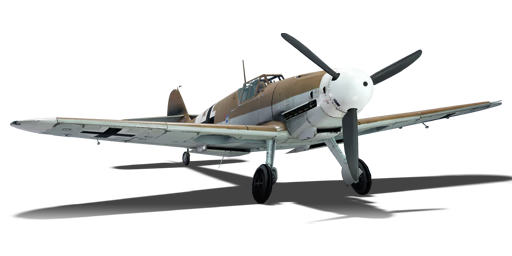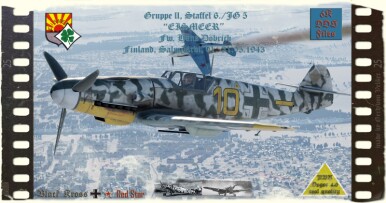



The Bf 109 G-2/trop is a German fighter. It has been in the game since the start of the Open Beta Test prior to Update 1.27.
The Bf 109 G-2/trop fulfils many roles in War Thunder: it can be used as a bomber interceptor and as a fighter bomber but where it really shines is the role of a pure fighter. The G-2 should be flown like every Bf 109 in an energy fighting style. The best climbing speed for the G-2 is 230 km/h (IAS) (alternative 270km/h (IAS) to pull of emergency manoeuvres faster) and you should climb from the start with WEP enabled to gain altitude/energy quickly.
This is the tropical variant of the "Gustav Zwei". Like the Bf 109 F-4/trop it features an engine intake dust filter, a socket for sun-umbrellas and several other accommodations versus particulate matter. While these modifications allowed for prolonged service life in harsh environments like North Africa, the Russian veld and Libya's desert, they also (marginally) cost top speed and engine performance due to increased air resistance and power diversion for the filtered aspirator.
The Gustav-2, like the Bf 109 F-4, has a very accurate and deadly main armament, which is mainly achieved by the engine mounted MG 151/20 cannon. The MG 151/20 cannon operates at a rate of fire of 750 rounds per minute with a muzzle velocity of 710-785 m/s and is capable to shoot one of the most effective cannon rounds against aircraft: the mighty minengeschoß (eng. Mineshell), which contains 20 g of high explosive filler. The Minengeschoß is in game shown as "HEI - High-explosive incendiary shell (minengeschoß)" and rips wings off with only few hits. It is very likely to hit viable parts of aircraft like fuel tanks and cooling systems because of the fuse delay which allows the Minengeschoß to penetrate half through wings before the shell explodes. The MG 17 machine gun operates at a rate of fire of 1,150 rpm and was used up to the Bf 109 G-4 at which point they finally upgraded with the bigger MG 131 with a calibre of 13 mm. The MG 17 was called "Luftwaffenanklopfgerät" (eng. Airforce-knock-knock-thing) derogatorily by German Luftwaffe pilots due to the small calibre and damage effect on aircraft.
flaps
flaps
flaps
brake
| Belt | Belt filling | Armor penetration (mm) at a distance: | |||||
|---|---|---|---|---|---|---|---|
| 10 m | 100 m | 500 m | 1000 m | 1500 m | 2000 m | ||
| IT/IT/APHE/HEI | 21 | 19 | 8 | 3 | 1 | 1 | |
| IT/HEI/HEI/AP-I | 27 | 24 | 14 | 7 | 3 | 2 | |
| AP-I/HEI/HEI/HEI/HEI/IT | 27 | 24 | 14 | 7 | 3 | 2 | |
| APHE/APHE/APHE/IT | 21 | 19 | 8 | 3 | 1 | 1 | |
| FI-T/FI-T/FI-T/IT/IT | 21 | 19 | 8 | 3 | 1 | 1 | |
| HEI/HEI/HEI/APHE/AP-I | 27 | 24 | 14 | 7 | 3 | 2 | |
| Belt | Belt filling | Armor penetration (mm) at a distance: | |||||
|---|---|---|---|---|---|---|---|
| 10 m | 100 m | 500 m | 1000 m | 1500 m | 2000 m | ||
| AP-T/AP-I/AI | 9 | 8 | 6 | 3 | 0 | 0 | |
| AP-T/AP/AI/AP-I | 13 | 12 | 7 | 3 | 2 | 0 | |
| AP-T | 9 | 8 | 6 | 3 | 0 | 0 | |
| AI/AP/AP/AP/AI | 13 | 12 | 7 | 3 | 2 | 0 | |












Flight performance | |
|---|---|
Survivability |
|---|
Weaponry | ||
|---|---|---|
